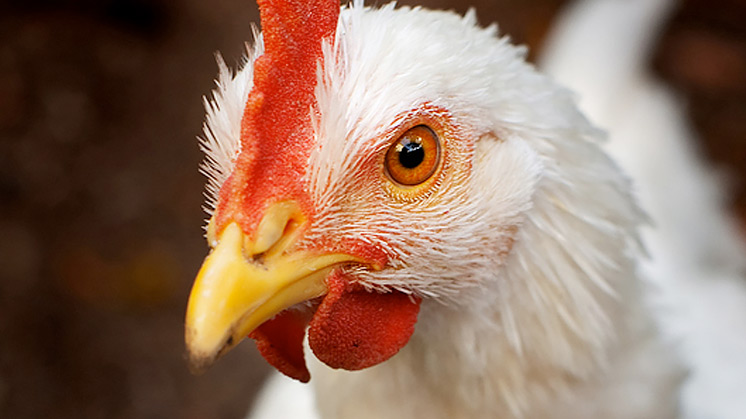Neck Skin Reduction

Aim: To assess reducing the length of neck skin remaining on the carcase in reducing the total enumeration of campylobacter on whole carcases
Project outline
- 5 birds were left with standard neck flap length and 5 with neck skin totally removed. Levels of campylobacter were ascertained using a whole carcase rinse method and testing via ISO 10272
- Work was undertaken to assess the acceptability to the consumer of carcases with short neck skin. Neck skin was removed at various lengths and assessments made of the raw product in pack and the cooked product
- Trial 2 was conducted on 9 carcases with a neck skin length 3.5 cm. Levels of campylobacter were ascertained using a whole carcase rinse method and testing via ISO 10272
- To assess results across the shelf life of the product, 3 carcases were tested on each of the following: Pack day +1, Pack day +5, Pack day +9.
- Trial 3 was conducted on 40 carcases to reduce any variation due to bird size and effectiveness of the total carcase wash in removal of bacteria. A more sophisticated and controlled method of carcase rinse was used and the results expressed as cfu/cm2 carcase using a carcase weight to carcase surface area conversion using the formula reported by Thomas.(Thomas N L 1978 J Food Technol 13 81-86)
Results
First Trial
Initial work carried out with complete removal of neck skin indicated a potential reduction in total campylobacter using a whole bird rinse method. The results indicated a potential decrease in Campylobacter of 0.9 log by comparing mean log values between the two groups.
- No neck skin:- mean count 632 cfu/ml rinse
- Standard neck skin:- mean count 4740 cfu/ml rinse
Second trial
- 1 (packing +1 day) / 750 (standard neck skin, cfu/ml) / 300 (short neck skin, cfu/ml)
- 1 / 5000 / 750
- 1 / 190 / 1300
- 5 / 280 / 170
- 5 / 130 / 60
- 5 / 160 / 160
- 9 / 60 / 100
- 9 / 840 / 500
- 9 / 1800 / 200
Although the bird appearance was acceptable prior to cooking, it was assessed as less so after cook because the neck cavity was exposed and the skin did not cover all the breast meat resulting a reduction in meat quality due to possible drying effects. 5cm was considered the shortest acceptable neck skin length.
Third trial
Standard neck skin (cfu/cm2 carcass): 4, 13, 49, 55, 74, 87, 151, 166, 218, 306, 653, 656, 656, 665, 680, 697, 705, 912, 925, 1118
Short neck skin (cfu/cm2 carcass): 22, 52, 75, 107, 130, 141, 143, 152, 484, 638, 643, 651, 661, 715, 744, 817, 1069, 1874, 4712, 21927
The results were statistically analysed by a two-way analysis of variance. This indicated that any improvement, i.e. lower counts, associated with short neck skins was tiny. There was weak evidence that carcases with short neck skins had a slightly greater risk of carrying campylobacter.
Conclusion
The results indicated that reducing the neck skin length on a chicken carcase to no more than 5cm did not impact on the risk associated with the level of campylobacter on whole chicken carcases.

